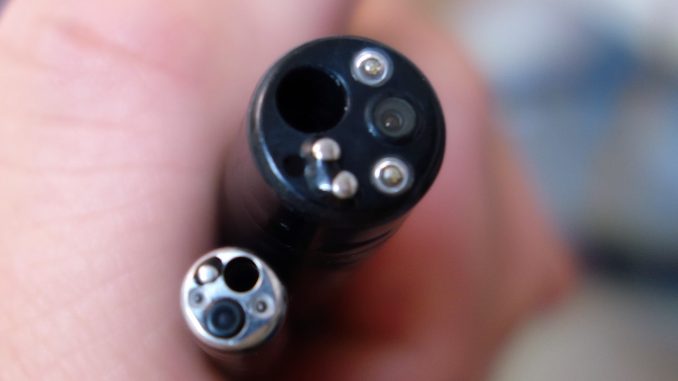
Endoscopy is a medical procedure that consists in the insertion of a long, thin tube equipped with a video camera into the patient’s body, in order to have a detailed look at a particular organ or tissue.
Minor surgeries can also be performed via endoscopy. Endoscopy is a minimally invasive intervention. The endoscope can be inserted through body orifices or through a small incision.
Because modern endoscopy has relatively few risks, it offers detailed images and it’s a fairly simple procedure, it has proven to be useful in many areas of medicine. It is estimated that tens of millions of endoscopies are performed each year.
Types of endoscopy
Endoscopy is useful in investigating:
- The gastrointestinal tract – esophagus, stomach, duodenum (esophagogastroduodenoscopy), the small intestine (enteroscopy), colon (colonoscopy, sigmoidoscopy), bile duct, rectum (rectoscopy) and the anus (anuscopy);
- The respiratory tract – nasal cavity (rhinoscopy), lower respiratory tract (bronchoscopy);
- The urinary tract (cystoscopy);
- The female reproductive tract – cervix (colposcopy), uterus (hysteroscopy);
- Pelvic abdominal cavities (laparoscopy), joints (arthroscopy), thoracic organs (thoracoscopy and mediastinoscopy).
Preparing for an endoscopy
The doctor will give the patient complete instructions on how to prepare before the procedure. Most types of endoscopy require you to not eat for up to 12 hours before the procedure. Some types of liquids, such as water or tea, could be allowed up to two hours before the procedure. In procedures involving the gastrointestinal tract and anus, laxatives will be given beforehand and the patient will get an enema.
Before the endoscopy, the physician will perform a complete physical examination and will take into account your medical history. It is strongly advised to tell your doctor about any medication you are taking. Also, the doctor should be alerted about possible allergies that can be caused by the endoscope. It is possible to discontinue certain medicines such as anticoagulants or antiplatelet drugs.
The endoscopic intervention
The intervention will depend, to a certain extent, on the cause of endoscopy. There are three main reasons for performing an endoscopy:
Investigation – if the patient experiences vomiting, abdominal pain, respiratory distress, stomach ulcers, dysphagia or gastrointestinal haemorrhage, endoscopy may help in detecting the cause of these symptoms;
Confirming a diagnosis – endoscopy can be used to perform a biopsy to confirm a diagnosis of cancer or other diseases;
Treatment – Endoscopy can be used to treat a disease directly. For example, it can be used to cauterize a blood vessel or remove a polyp.
Sometimes, endoscopy can be associated with another procedure, such as ultrasound. Ultrasound is used to place the probe near organs that are hard to find, such as the pancreas.
An endoscopy is typically performed while the patient is conscious, although sometimes the patient may receive local anesthesia. For interventions involving the insertion of the endoscope through the mouth, a mouthguard will be used to protect the teeth and lips.
Post-Surgery recovery
The post-endoscopy recovery depends on the type of intervention. For an upper endoscopy, used to allow a doctor to examine the upper digestive tract, the patient will usually be observed for one hour until the effect of the anesthetic is gone.
It is recommended that patients do not work or drive on that day because of the sedative effect that certain pain relievers might have.



Leave a Reply